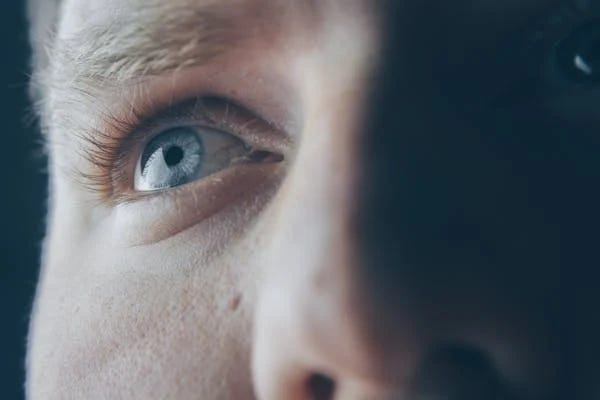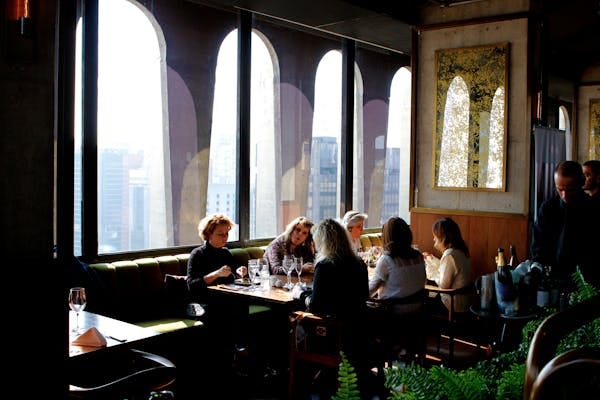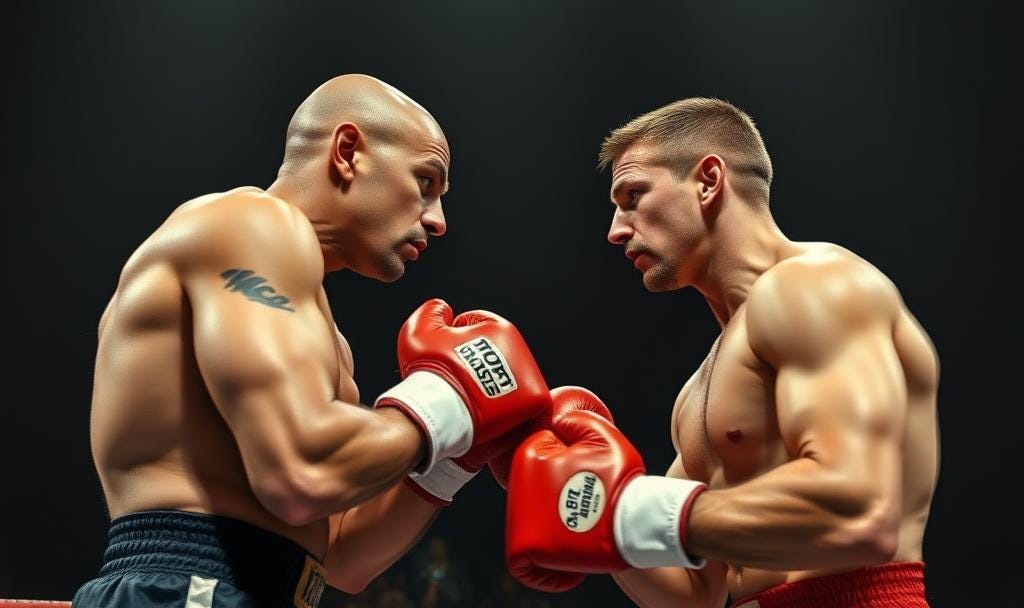Ever been in a situation where someone is staring at you, glaring at you, or watching you, in a way that seems just a bit more than standard curiosity? Eyes upon us can indicate that a possible threat, or situation may lead to aggression.
It can feel unpleasant, when you notice an individual or group maintaining eye contact for a long time, particularly if that eye contact is laced with malice. How to handle this? What are the options? Let's dive...
Establish
The fact you've spotted someone staring or glaring, means you've already been applying some situational awareness. Good. Well maybe good...You see, usually, there are ways to apply awareness in a specific manner, depending on the context of the situation.
Often, it needs to be applied in a subtle way. Over pronounced scanning of your environment, can actually, invite glares from certain parties.
One all too common situation is where you have a group of people socialising, in a bar or club, and their eyes meet the eyes of a more rowdy group, who then act like they've been disrespected or challenged.
What was just a checking of the surroundings, now invites confrontation. Or, a casual look round a room and a meeting of eyes, may give someone the sudden feeling that you've given them an inviting look. Now, they may enter your personal space, eager to get to know you, when you don't necessarily share the sentiment.
The take away here- yes it's good to observe one's surroundings, but be careful of eye contact.
When you have detected eyes upon you, you need to establish, what's the reason behind this. You're not expected to mind read here, though if you are intuitive, perceptive or observant, you may get a clear idea of the intent behind the eyes, or projecting through them. Sometimes, it's not exactly hidden. Sometimes, you just feel something...
Even if you can't read specific intentions, you might have already picked up other behavioural indicators, or details about the person and how they convey themselves that might require you to be alert.
On the other hand, those other details, may put your mind at rest, that the staring is just that and not a precursor to further trouble.
Staring can occur for all manner of reason that whilst uncomfortable, if you are on the receiving end, is not actually aligned with hostility.
In some cultures, staring may be seen as more acceptable, maybe not across the whole of that culture, but within certain social layers. This can especially be the case if you're a foreigner and have very different features. It could just be curiosity.
In some cases, the staring person may seem to convey an unfriendly demeanour, but that's just due to way there serious or tense face comes across. The moment they smile their features soften. Again, one has to use their discernment.
People might be blatantly staring because they have some kind of condition or disorder. There are also people who are just very extrovert and interactive, with those within their surroundings. Here though, such people won't just look; they'll usually engage you in banter.
Your sensitivity to your environment, will also influence how you perceive an extended glance and also how this glance will make you feel.
This establishing of the motives for the staring, might have to happen very quickly. It may even happen, in that very moment, you first notice them.
If you try to pick up more information about them, immediately after you've clocked their stare, they're going to notice you're placing attention on them. Sometimes, you might need to wait for a more timely moment, to gain further information.
You might want to change your position, or move in such a way, that you can conceal your further observations, within your movement or seemingly normal activity. You might not want to directly look at them, to avoid a face off, but you can still perhaps note their position. If they suddenly move, you will be more prepared, if they come towards you.
I mentioned about sensitivity to one's environment, just now. Well this can intensify, when you are in unfamiliar environments, or an area when you feel more exposed to danger. A person's emotional state and disposition can also make them more sensitive to the behaviour of others.
Your own role, or task at hand, can also make you more sensitive to your environment and the actions of others. Perhaps you are with loved ones and feel protective of them. It may even be that the nature of your work, makes you more alert or uneasy, when you feel you are being watched.
Thinking of times when I've worked with counter surveillance teams-your senses become very acute to the movement and visual activity of those in the vicinity.
You have to be grounded, as you assess what takes place around you, or the person being targeted. You don't want to over think; at the same time, you don't want to disregard something potentially serious that your awareness picks up.
Your ability to establish and then handle the situation, will be more effective if you can maintain a calm state of neutrality. You don't want emotion to cloud your mind.
Reasons
In street culture, staring is done to establish territorial presence and dominance. It can be used to intimidate others. It can be used to express anger and hostile emotion, if there has been a prior verbal exchange.
Staring is indeed a tool of the coarse, crude and criminal. The hostile glance may be followed by actual physical violence, so you must be mindful of the distance between you and them.
You see the stare down happening when boxers face off, at the press conference. Here they are trying to disrupt the opponent's confidence and focus.
In certain fighting arts, in India, South East Asia and Russia, there are high level practitioners with knowledge of how to use the eyes to distract or destabilise the opponent, on the psychological level.
Even those from street backgrounds do pick up ways of using the eyes to unnerve or scare others. The eyes are not just windows to the soul- they are transmitters of energy.
Even within working environments, you might be aware of someone who tries to force their way or their opinion, or tries to belittle others using the eyes. Often, those who use this tactic, use it because they learnt it an early age, from their parents or immediate family.
Staring might also be used by those who express some kind of prejudice towards the person. The staring is to project hatred or show the person they are not welcome. Again, it could be an indication that things may regress to more physical expressions of hatred.
There is staring to intimidate or dominate but there are also predatory aggressors who might be watching someone for other insidious reasons. They might not show aggression or convey a bullish vibe but their extended glance may have a more obsessive or compulsive energy to it.
Opportunist thieves might also be watching to see what expensive goodies you have and to see who may drop their guard.
Adapting to the situation at hand
When you get even a basic sense of the reasons behind the intense or extended look, you will be in a better place to respond (if you even need to). The context of the situation will also influence options. A rowdy group staring from across the bar is very different to a person in close proximity scowling at you, during an escalating verbal confrontation.
If it's a long distance observer, be mindful of how you convey yourself. They might not realise you've clocked them watching you, so in your actions you get to convey certain things.
You can show you are alert, confident, and not an easy target, or it may simply be better to convey you were not trying to disrespect them and that your meeting of eyes was accidental. This often can be done by just not showing any further eye contact and just getting on with another activity.
Again, every situation is different. If you feel the threat level is high, it may be better to exit that environment if possible. Consider also, if you leave a venue, is the watcher likely to follow. Will you be more vulnerable outside?
On women's personal safety courses, there will often be an attendee who mentions a situation where someone was following or acting in an over familiar or strange way, with excessive staring.
In some of these situations, it may be necessary to quickly let someone know and even ask for help. There are also tactics shared in training, to help one disengage from a persistent individual, who is firing off lots of dialogue and encroaching on your space.
Using subtle awareness, it helps if you can notice if the threatening party moves from their current position. Also, if you lose your visual on them, be careful when you leave that environment, in case they are waiting outside.
You may have to just see how things unfold with time. In many cases, the situation dissolves on its own.
Now, if it's an argument with someone, consider what you can do, to de-escalate the aggression and create space. Some street fighters, use a staring tactic, to establish a lock on with your eyes. They then attack, and the lock on effect causes a delay in how the other person responds. The eyes can be used to make someone freeze with fear.
Remember though, this is not a boxer's staring contest, you don't have to play the game of a stare down or face off. More on eye placement in a future post...
From my experience, one of the most powerful elements we can explore in training is the connection to certain energetic states. This certainly a core part of Tri-Tier's training approach. We can't always be the strongest, toughest looking person but a calm, steady state has a way of fading out the intensity of others, be it through stare, glare, dialogue or other means...
Aran
About the author
Based in London, Aran Dharmeratnam is the founder of Tri-Tier. He specialises in personal safety training, often working with high-profile figures and their families. With experience in various areas of the security sector, Aran also works with global security companies involved in private investigations and strategic intelligence. He’s been deployed on the ground, in numerous cases. Aran’s insights have appeared in The Financial Times, The Spectator, Aviation Security International, and Security Management Today.
For consultations or training contact: office@tri-tier.com


























